“How To Teach Jazz & Improvisation” Book
Original price was: $60.00.$39.95Current price is: $39.95.
Description
Introducing our How To Teach Jazz & Improvisation book in print!! This is your ultimate guide to mastering the art of teaching jazz and jazz improvisation. Whether you’re an experienced jazz educator or just starting out, this e-book provides valuable insights, tips, and strategies to help you effectively teach jazz and inspire your students to become skilled improvisers. Unlock the secrets of jazz education with this comprehensive resource and watch your students flourish in their musical journeys. Get your copy today and start transforming your teaching approach!
Why Jazz?
Jazz is a fun and exciting art form! Students are inspired to play it and unlock different areas of their creativity. Unfortunately, many teachers avoid jazz due to feeling unequipped or unknowledgeable. This book gives teachers of all instruments and musical backgrounds the practical knowledge to introduce and develop jazz in their lessons OR classes.
Why This Book?
Many jazz resources available either skip improvisation completely, or start way too advanced. This makes improvisation fun & accessible to all students, teachers, and instruments regardless of musical background. Start improvising in the first lesson!
What’s Inside?
✅ Everything You Need to Start –Learn how to break down swing feel, phrasing, and rhythm in a way that’s accessible for all students. Practice & improv tips too!
✅ 7 Specially Composed Jazz Duets – Get students playing immediately! These duets work for all instruments and include teacher parts or play-along recordings on Spotify.
✅ Improvisation Made Simple – Note guides & creative prompts help students start improvising right away with no fear of wrong notes!
✅ Essential Listening – Listening guides jazz legends, key recordings, and important artists of today.
✅ Jazz Harmony – Understand jazz harmony with chord symbol guides and chord voicings for pianists and guitarists.
Spiral Binding
📖 Spiral-Bound Print Book – Practical & easy to use in lessons. 8.5 X 11 size is perfect for making copies for your students.
Start Teaching Jazz with Confidence – Get Your Copy Today!
2 reviews for “How To Teach Jazz & Improvisation” Book
Only logged in customers who have purchased this product may leave a review.
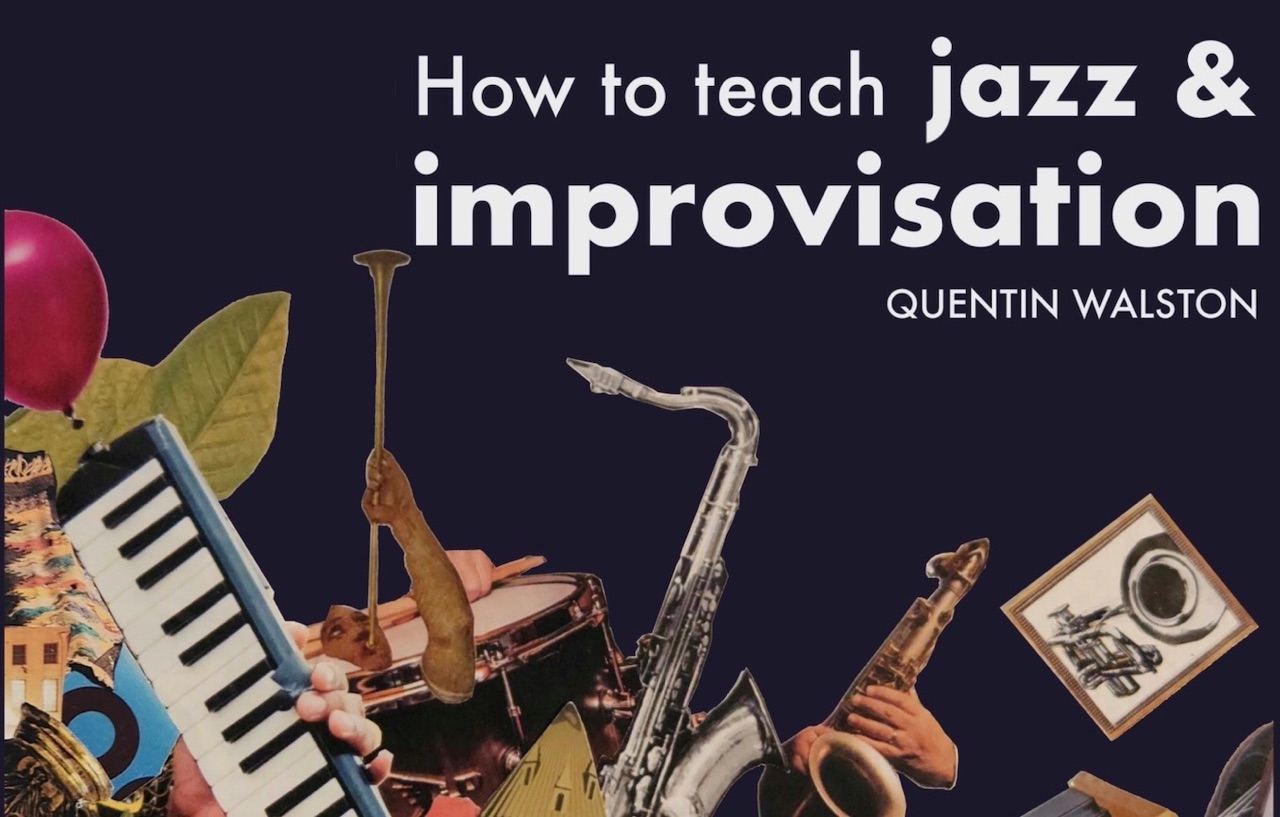
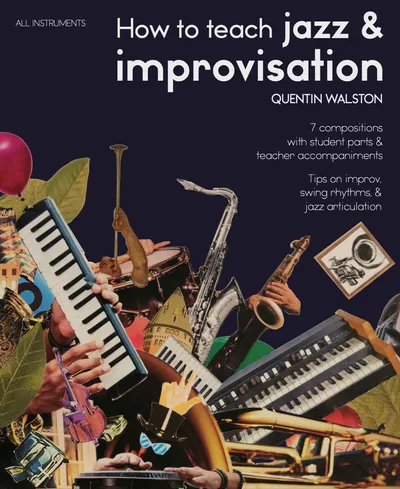
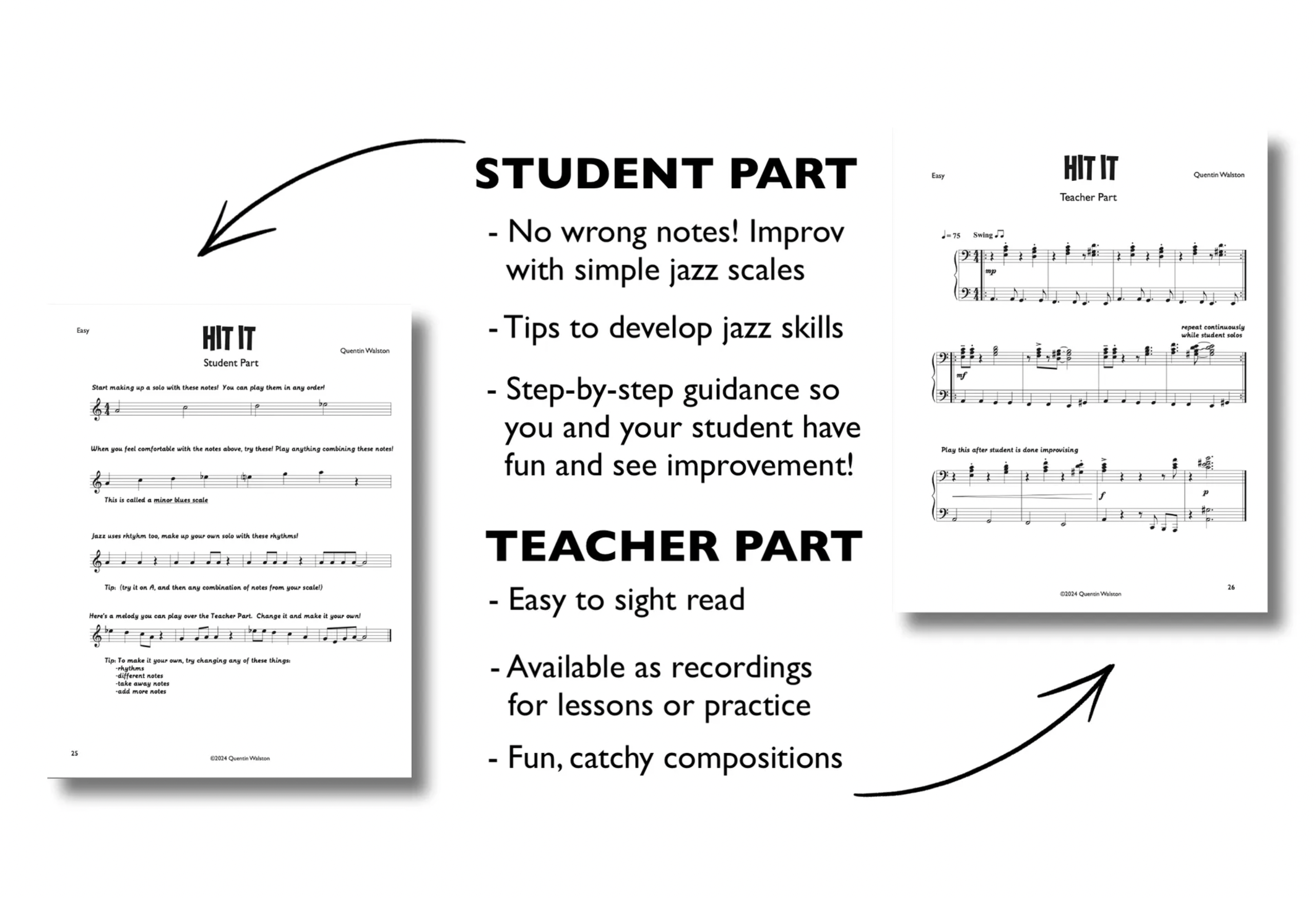

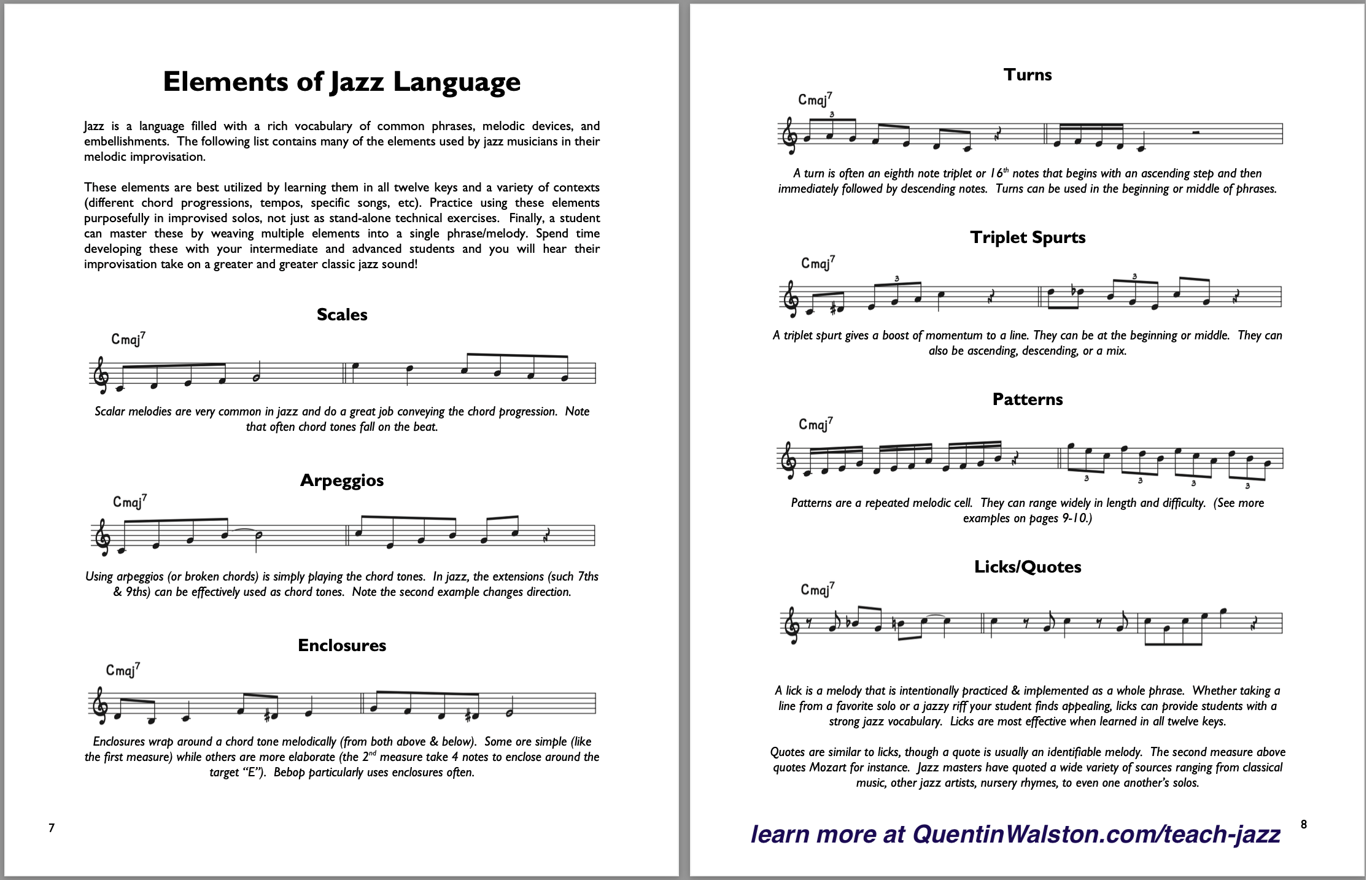
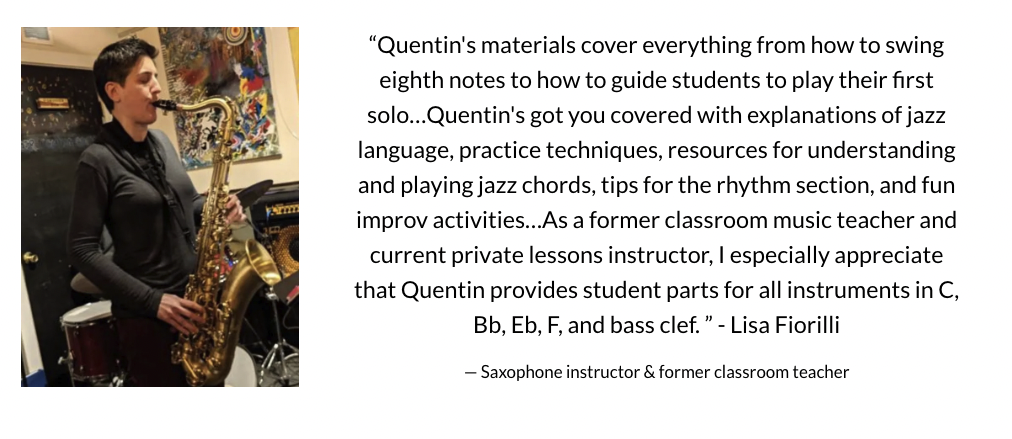
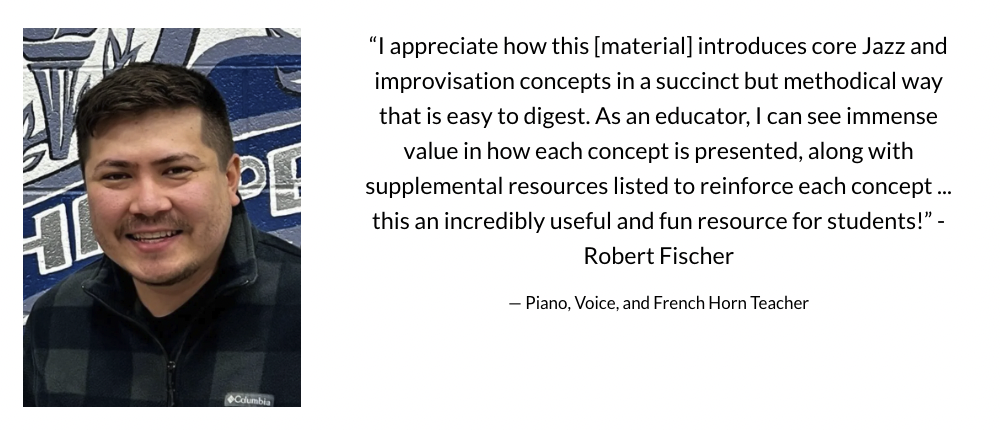
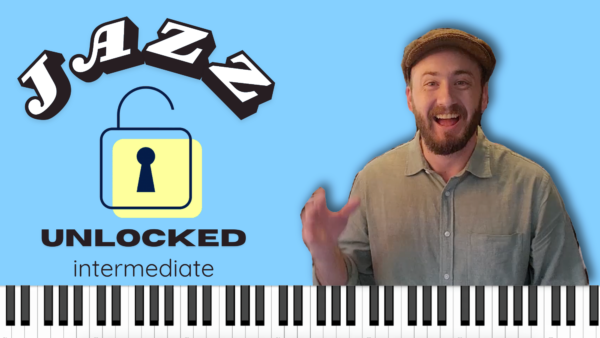
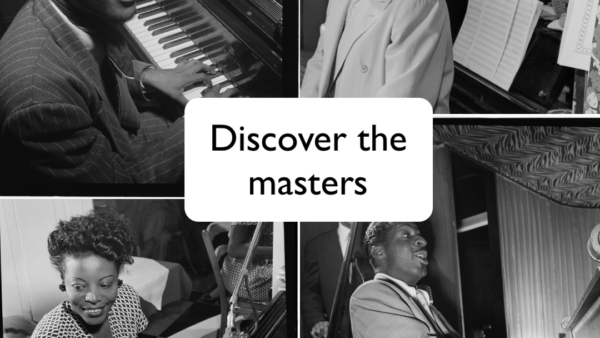
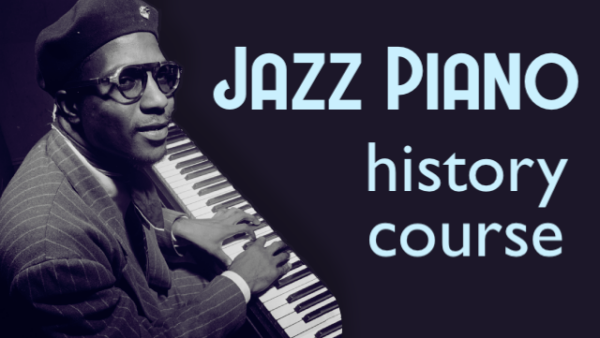
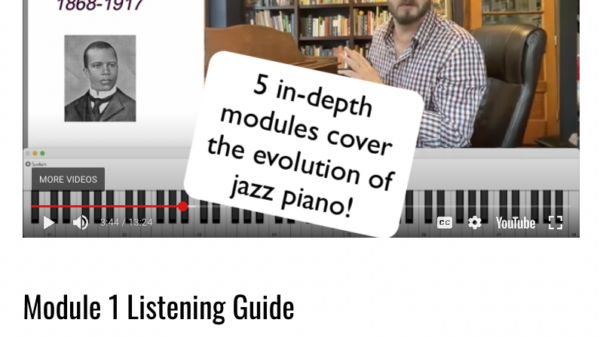
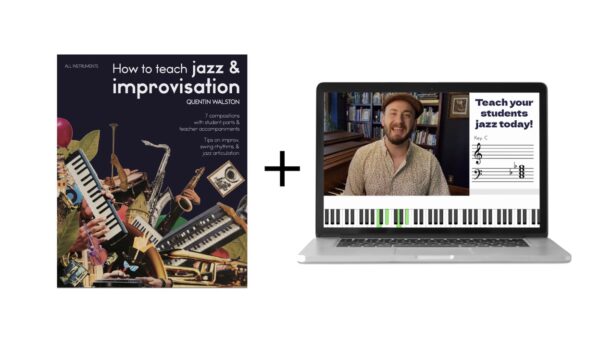
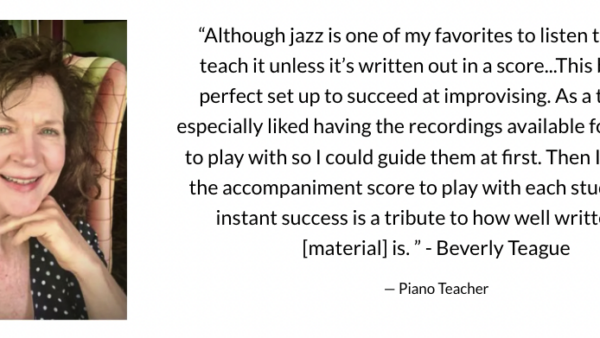
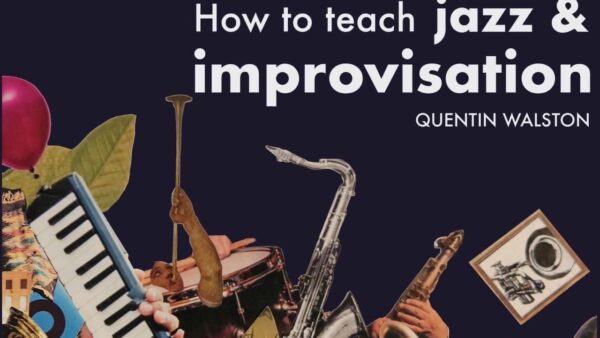
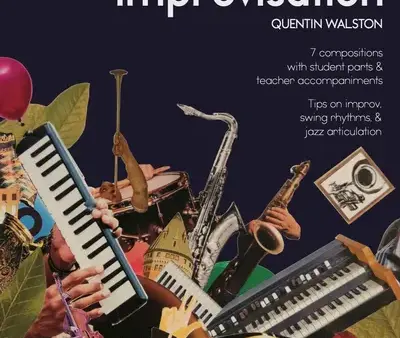
Tara Planeta (verified owner) –
This is an amazing book you have put together, and I love the way you so patiently break down all of these jazz concepts. This is all information that can seem intimidating to musicians/teachers who don’t perform jazz, and definitely for students who are interested to learn but are starting from scratch. The combination of both the aural side of listening to learn/understand and supplemental explanations that fill in the blanks and questions everyone would have is wonderful.
-Tara Planeta, Ed. D. violin teacher
Matt Ogden (verified owner) –
Quentin Walston’s book on how to teach jazz and improvisation is essential study material for any student and teacher of music, regardless of genre. As opposed to common misperceptions, spontaneous creativity in music is not random, but rather Quentin’s approach shows that it can be simultaneously both rigorous and free. The successful improviser understands that there is an internal logic, a grammar if you will, to the musical language, and also a richly accumulated vocabulary of expression which has been handed down across generations. By having command over these elements at one’s fingertips, musical thoughts can be translated into sound instantaneously, as fluidly as thoughts are put into words by one who is fluent in any spoken language. Quentin’s approach shows that jazz improvisation can be understood as a subset of musical improvisation in general, and emphasizes the importance of understanding music as a language — one which has many and vastly varying idioms, dialects, and modalities — but regardless of the idiom the student should feel fluent and free to express thoughts as they come to mind, as in a conversation, and to create music spontaneously beyond the notes that are statically written on the page.
In this book, Quentin focuses on the ability of jazz musicians to speak the language of music in a fluent and spontaneous way. In my opinion, this is important for even non-jazz musicians to internalize. In the same way improvisation and spontaneous composition is alive and well among jazz musicians, those who specialize in so-called classical music could also well afford to rediscover their roots in improvisation and active musical creativity. As opposed to the strict separation we perceive today between composer and performer, in its original form, so-called classical music blurred the line between those roles much more than we do presently. One needs only study the art of free variation and embellishment in baroque music, recall the stories of J.S. Bach improvising multi-voiced fugues at the court of Frederick the Great, or explore the school of musical pedagogy taught in the 17th and 18th centuries in the Italian conservatories which trained students from a young age in the art of partimento (polyphonic melodic improvisation over a given bass, and ultimately the free improvisation of fugues and other large forms based off a given theme), to understand that even the most developed forms of musical composition must go hand-in-hand with a free and fluent ability to improvise and express complex musical thoughts spontaneously and in the moment. Outside of jazz, this art form is still seen today in the ability of highly-skilled church organists to employ varied harmonization and extended improvisation in their service playing, another case in which improvisation must be structured as well as free.
It is my hope that these contributions by Quentin Walston, among the many other educators and researchers active in this field, can help spark a renaissance in the approach to musical education which goes beyond rote performance and rules, and rather inspires the musicians of the future to understand music as a living, breathing language, in which even the great compositions of the past are understood as products of an improvisatory spirit and are performed as such, allowing all students to unlock their full creative potential and inspiring teachers in all musical genres to carry that fluency of expression and rigorous-yet-spontaneous creativity into the full scope of their pedagogical approach.
-Matthew Ogden Bassoon teacher & Associate Director of Music at Holy Trinity Catholic Church